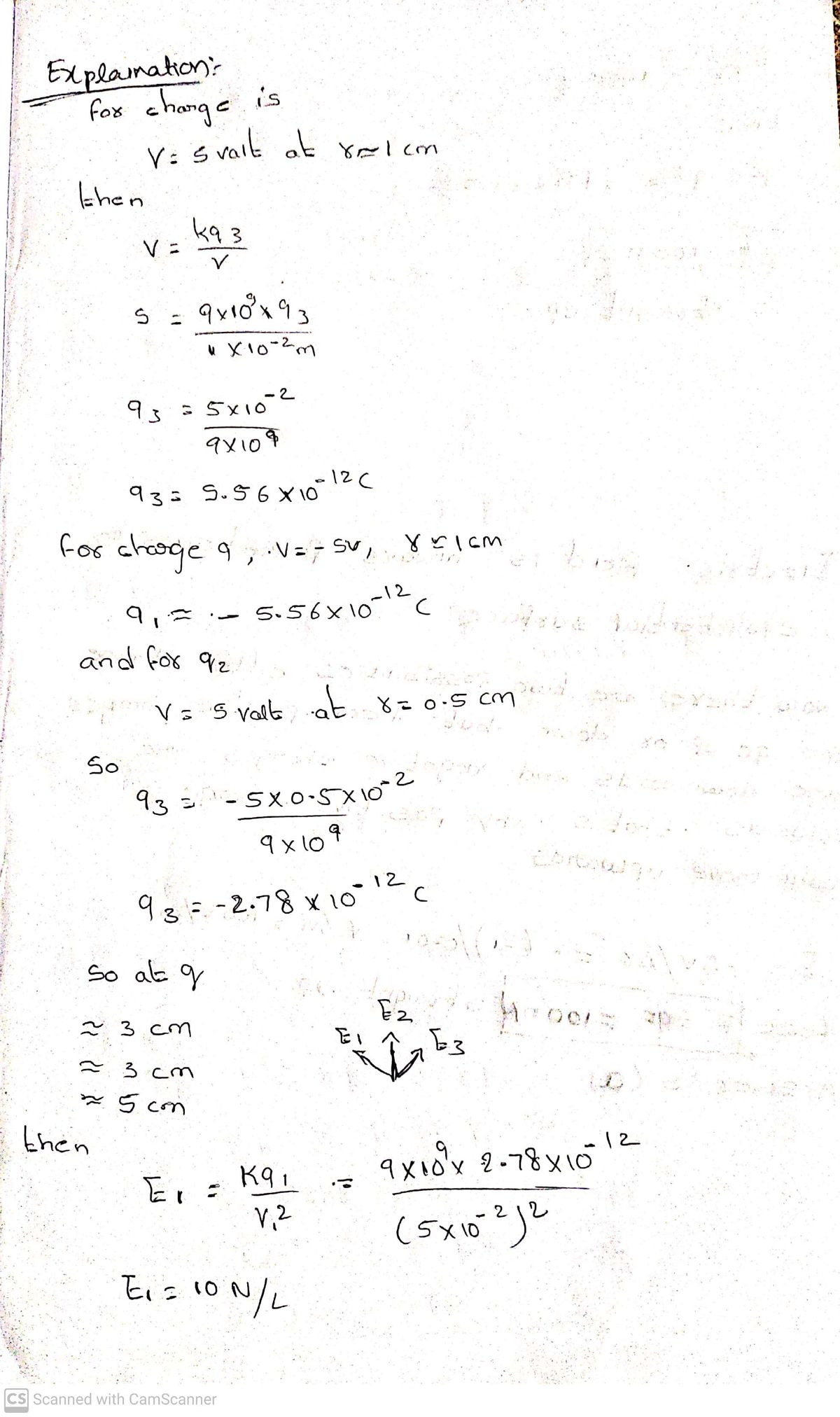Estimate the force on a +1 nC charge release from rest at location "g": cm 1 Volta 100 nN straight up 50 nN to the left 200 nN straight up 100 nN straight down
Estimate the force on a +1 nC charge release from rest at location "g": cm 1 Volta 100 nN straight up 50 nN to the left 200 nN straight up 100 nN straight down
College Physics
11th Edition
ISBN:9781305952300
Author:Raymond A. Serway, Chris Vuille
Publisher:Raymond A. Serway, Chris Vuille
Chapter1: Units, Trigonometry. And Vectors
Section: Chapter Questions
Problem 1CQ: Estimate the order of magnitude of the length, in meters, of each of the following; (a) a mouse, (b)...
Related questions
Question

Transcribed Image Text:**Determine the Force on a Charge in an Electric Field**
Estimate the force on a +1 nC (nanoCoulomb) charge released from rest at location "g".
**Diagram Explanation:**
The diagram displays equipotential lines for three charges, Q1, Q2, and Q3, located at distinct positions on a grid. The equipotential lines are closer together near the charges, indicating regions of stronger electric fields.
- The equipotential lines have different voltage values labeled around them.
- Q1, Q2, and Q3 are the central charges around which these equipotential lines are arranged.
- The grid at the bottom indicates distance in centimeters.
- The point "g" is marked and situated on one of the equipotential lines, which is crucial for determining the force on the charge at that location.
**Force Estimation Choices:**
- 100 nN (nanonewtons) straight up
- 50 nN to the left
- 200 nN straight up
- 100 nN straight down
The potential gradient and distance from the charges will help estimate the magnitude and direction of the force acting on the +1 nC charge at point "g".
Expert Solution
Step 1
Here is the two possible methods in the given image

Step by step
Solved in 2 steps with 2 images

Knowledge Booster
Learn more about
Need a deep-dive on the concept behind this application? Look no further. Learn more about this topic, physics and related others by exploring similar questions and additional content below.Recommended textbooks for you

College Physics
Physics
ISBN:
9781305952300
Author:
Raymond A. Serway, Chris Vuille
Publisher:
Cengage Learning

University Physics (14th Edition)
Physics
ISBN:
9780133969290
Author:
Hugh D. Young, Roger A. Freedman
Publisher:
PEARSON

Introduction To Quantum Mechanics
Physics
ISBN:
9781107189638
Author:
Griffiths, David J., Schroeter, Darrell F.
Publisher:
Cambridge University Press

College Physics
Physics
ISBN:
9781305952300
Author:
Raymond A. Serway, Chris Vuille
Publisher:
Cengage Learning

University Physics (14th Edition)
Physics
ISBN:
9780133969290
Author:
Hugh D. Young, Roger A. Freedman
Publisher:
PEARSON

Introduction To Quantum Mechanics
Physics
ISBN:
9781107189638
Author:
Griffiths, David J., Schroeter, Darrell F.
Publisher:
Cambridge University Press

Physics for Scientists and Engineers
Physics
ISBN:
9781337553278
Author:
Raymond A. Serway, John W. Jewett
Publisher:
Cengage Learning

Lecture- Tutorials for Introductory Astronomy
Physics
ISBN:
9780321820464
Author:
Edward E. Prather, Tim P. Slater, Jeff P. Adams, Gina Brissenden
Publisher:
Addison-Wesley

College Physics: A Strategic Approach (4th Editio…
Physics
ISBN:
9780134609034
Author:
Randall D. Knight (Professor Emeritus), Brian Jones, Stuart Field
Publisher:
PEARSON